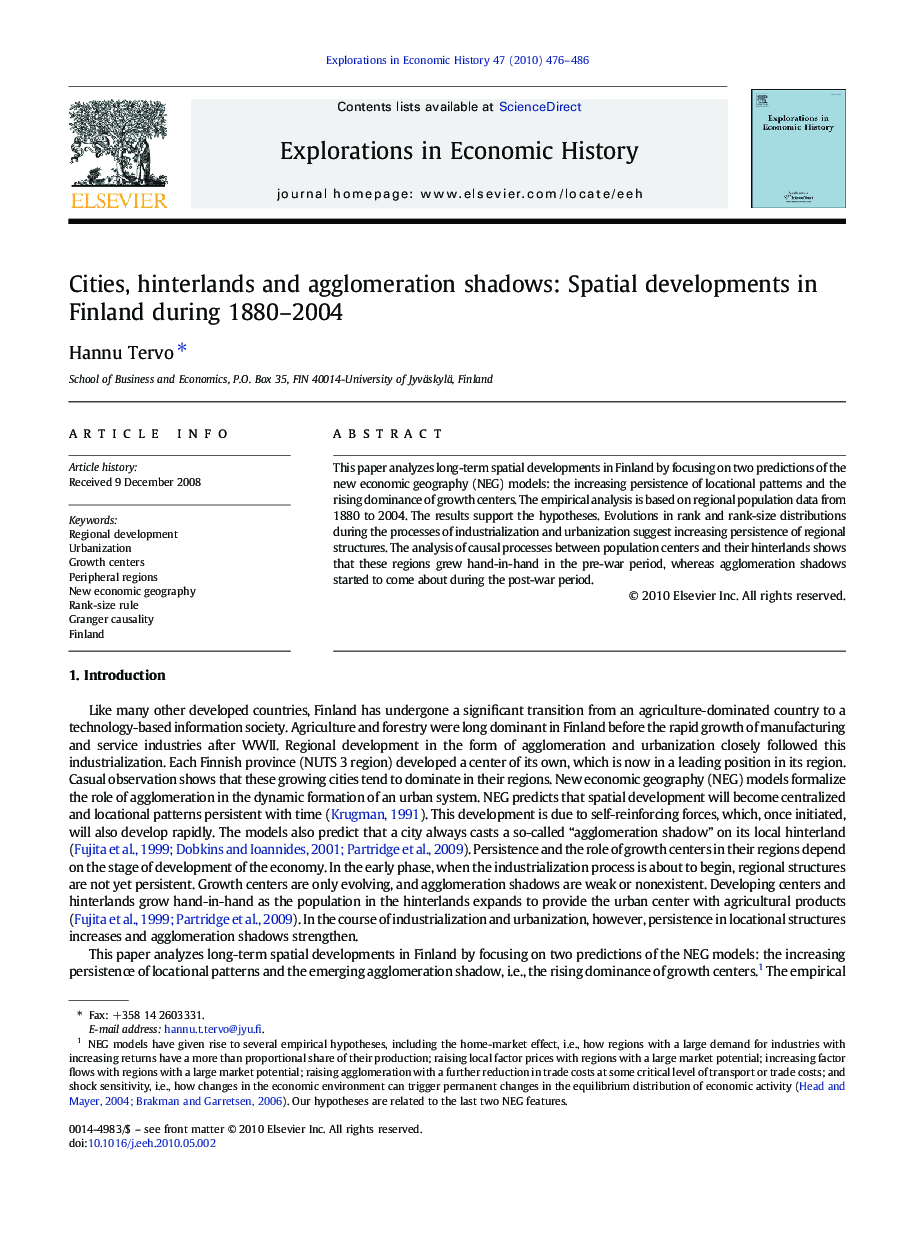| Article ID | Journal | Published Year | Pages | File Type |
|---|---|---|---|---|
| 5069174 | Explorations in Economic History | 2010 | 11 Pages |
Abstract
This paper analyzes long-term spatial developments in Finland by focusing on two predictions of the new economic geography (NEG) models: the increasing persistence of locational patterns and the rising dominance of growth centers. The empirical analysis is based on regional population data from 1880 to 2004. The results support the hypotheses. Evolutions in rank and rank-size distributions during the processes of industrialization and urbanization suggest increasing persistence of regional structures. The analysis of causal processes between population centers and their hinterlands shows that these regions grew hand-in-hand in the pre-war period, whereas agglomeration shadows started to come about during the post-war period.
Keywords
Related Topics
Social Sciences and Humanities
Arts and Humanities
History
Authors
Hannu Tervo,
